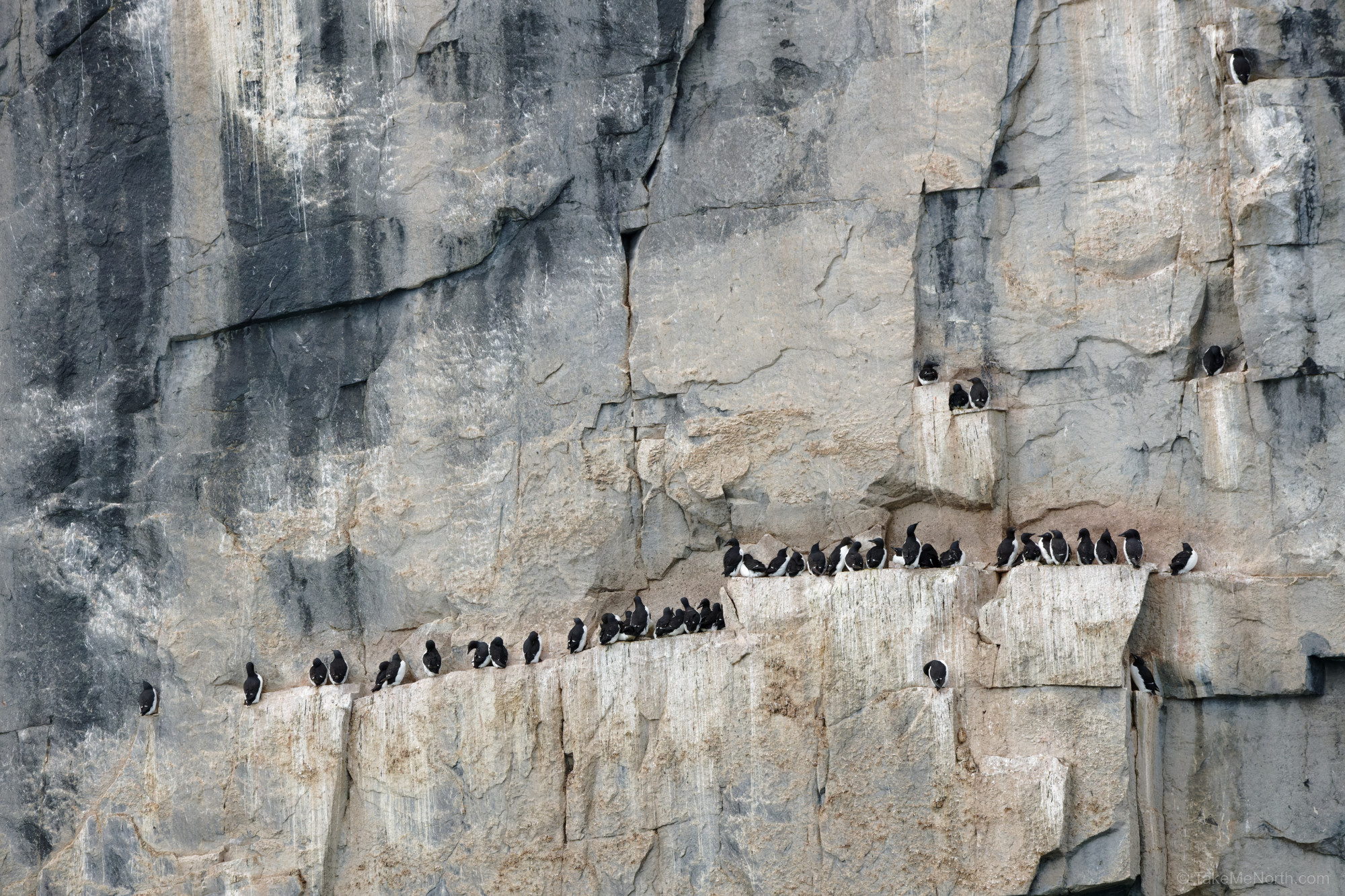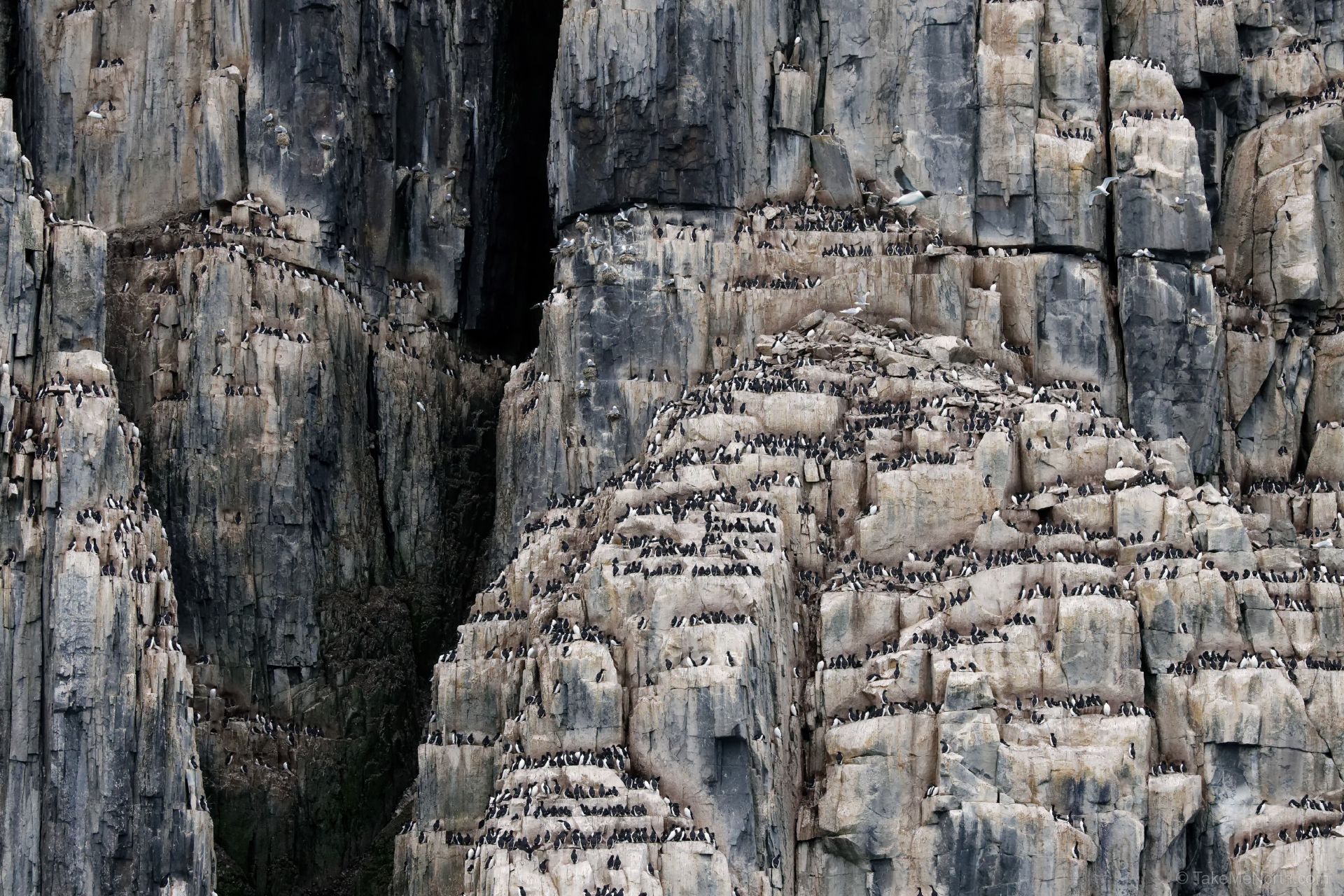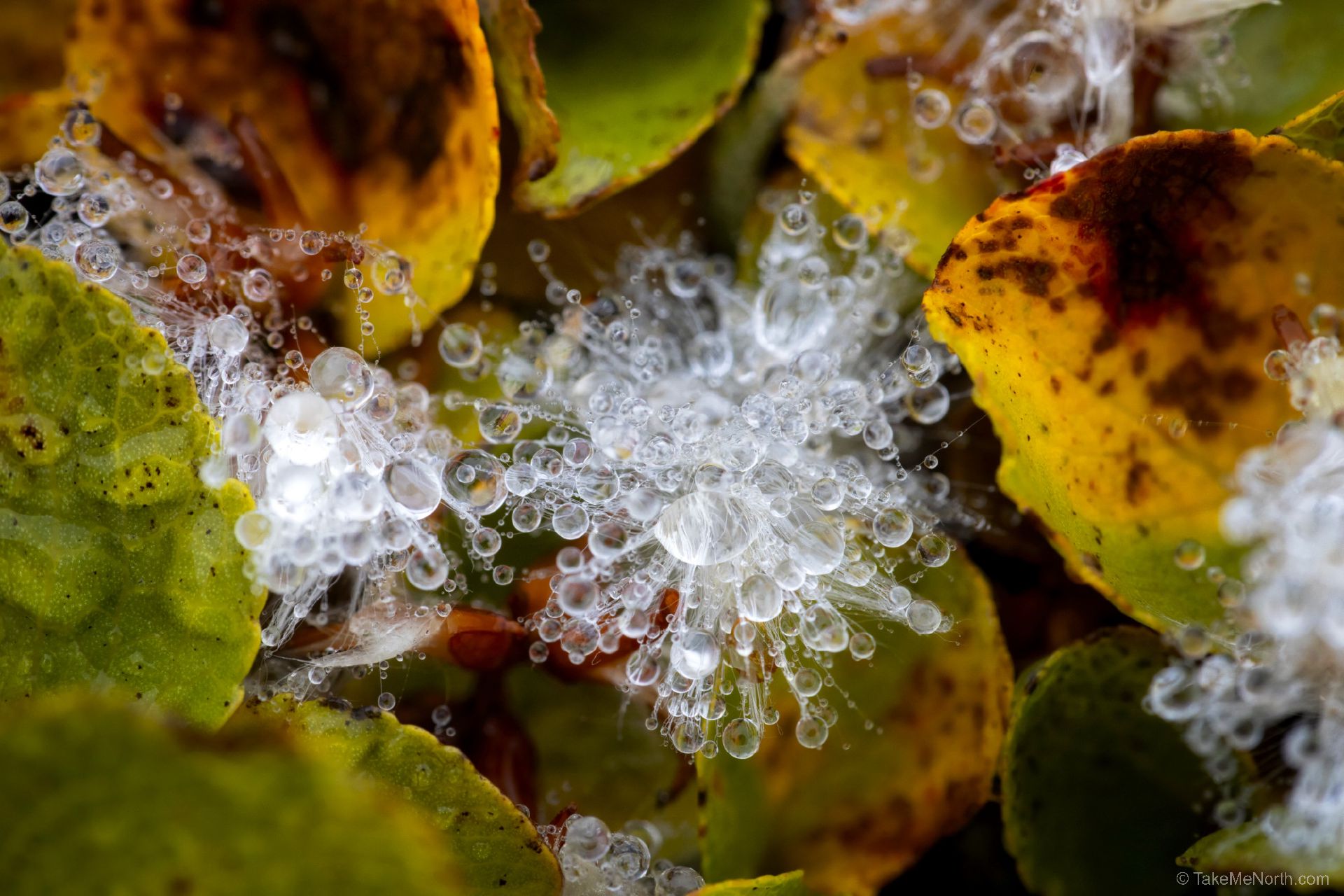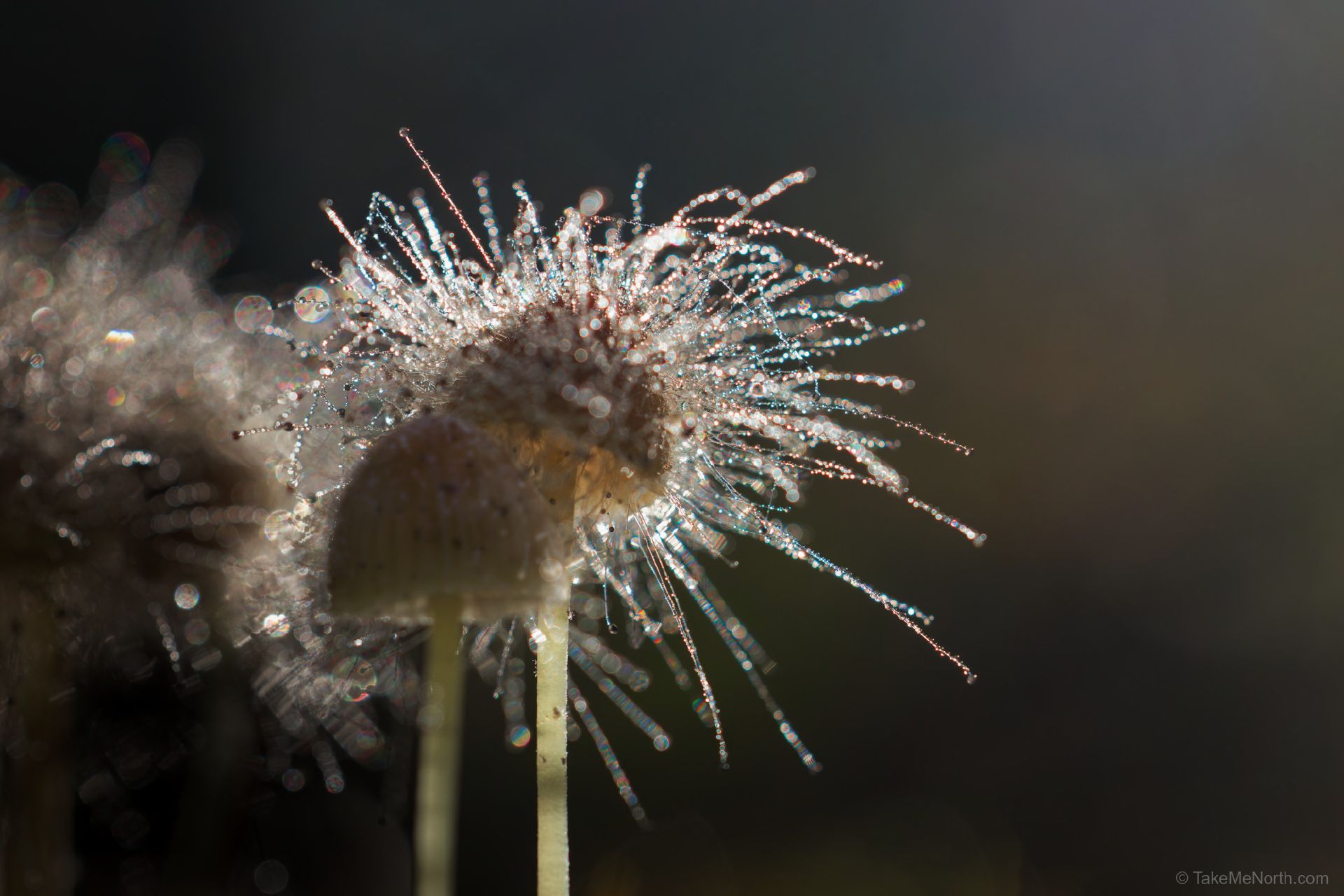Nestled along the remote Arctic waters of Svalbard, Alkefjellet is a breathtaking natural spectacle, revered for its dramatic cliffs and thriving seabird colonies. It is positioned along the Hindeloopenstretet strait, between the islands of Spitsbergen and Nordaustlandet and a vital part of the Arctic’s delicate ecosystem. Alkefjellet, which translates to “Auk Mountain” in Norwegian, is named after the large populations of auks that nest along its towering cliffs. Rising up to 100 meters above the icy waters below, the cliffs are made of dolerite, a type of volcanic rock known for its resilience and layered patterns. These steep, dark walls of rock are the result of volcanic activity that took place millions of years ago and have since been shaped by intense glacial forces.
The geology at Alkefjellet is distinctive, with deep, narrow crevices, sheer cliff faces, and sharp rock outcroppings. It’s these unique features that make the cliffs an ideal nesting ground for various seabirds, as the high ledges provide protection from predators like arctic foxes and skuas.
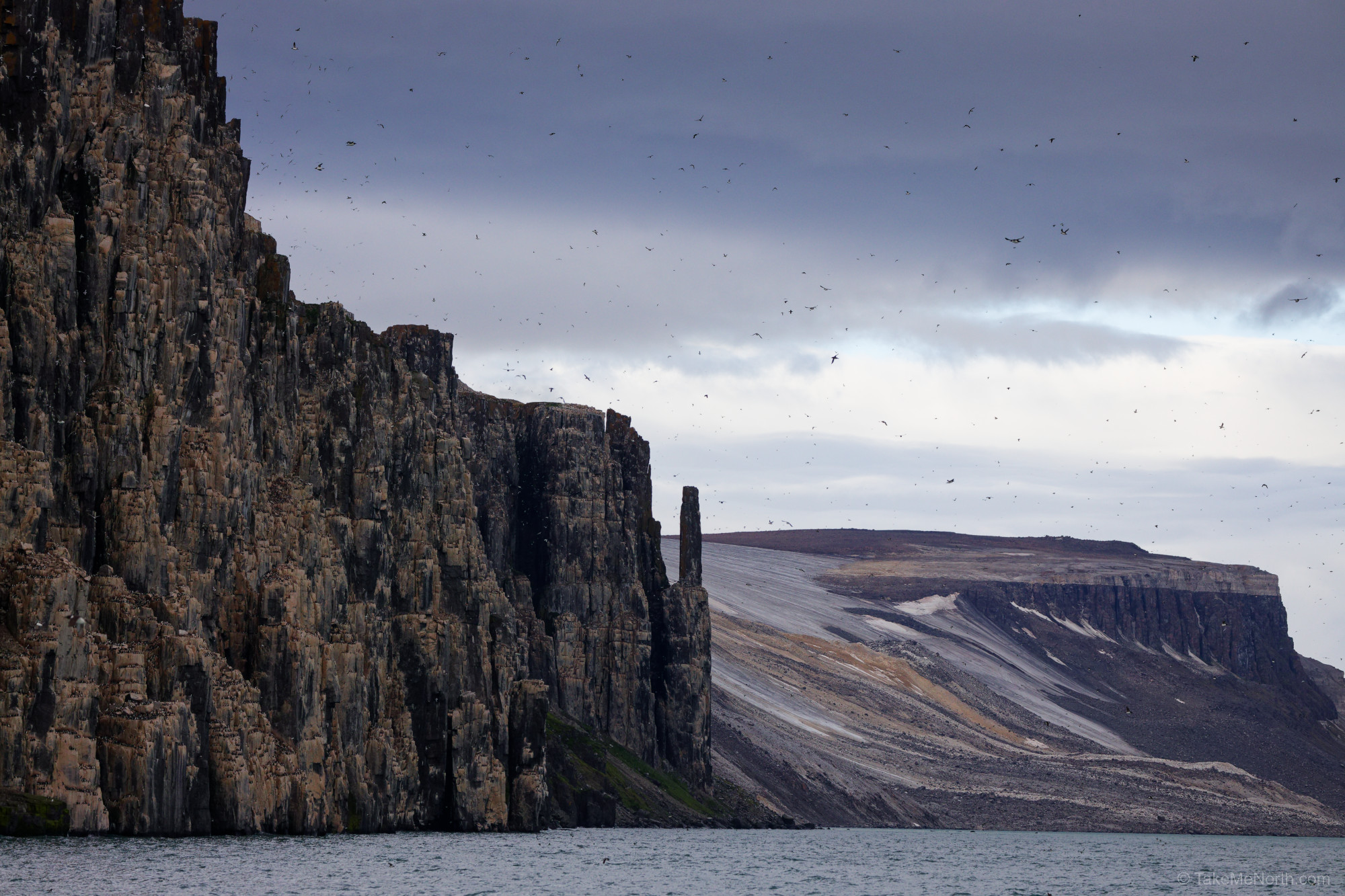
The steep cliffs of Alkefjellet in summer
An Oasis for Seabirds in the High Arctic
One of the defining characteristics of Alkefjellet is its seabird colonies. During the short Arctic summer, the cliffs come alive with the sounds and sights of tens of thousands of birds, predominantly Brünnich’s guillemots. These black-and-white seabirds, also known as thick-billed murres, are adapted to the harsh conditions of the Arctic. Their streamlined bodies make them efficient divers, allowing them to forage for fish and crustaceans beneath the ice-cold waters of the fjord.
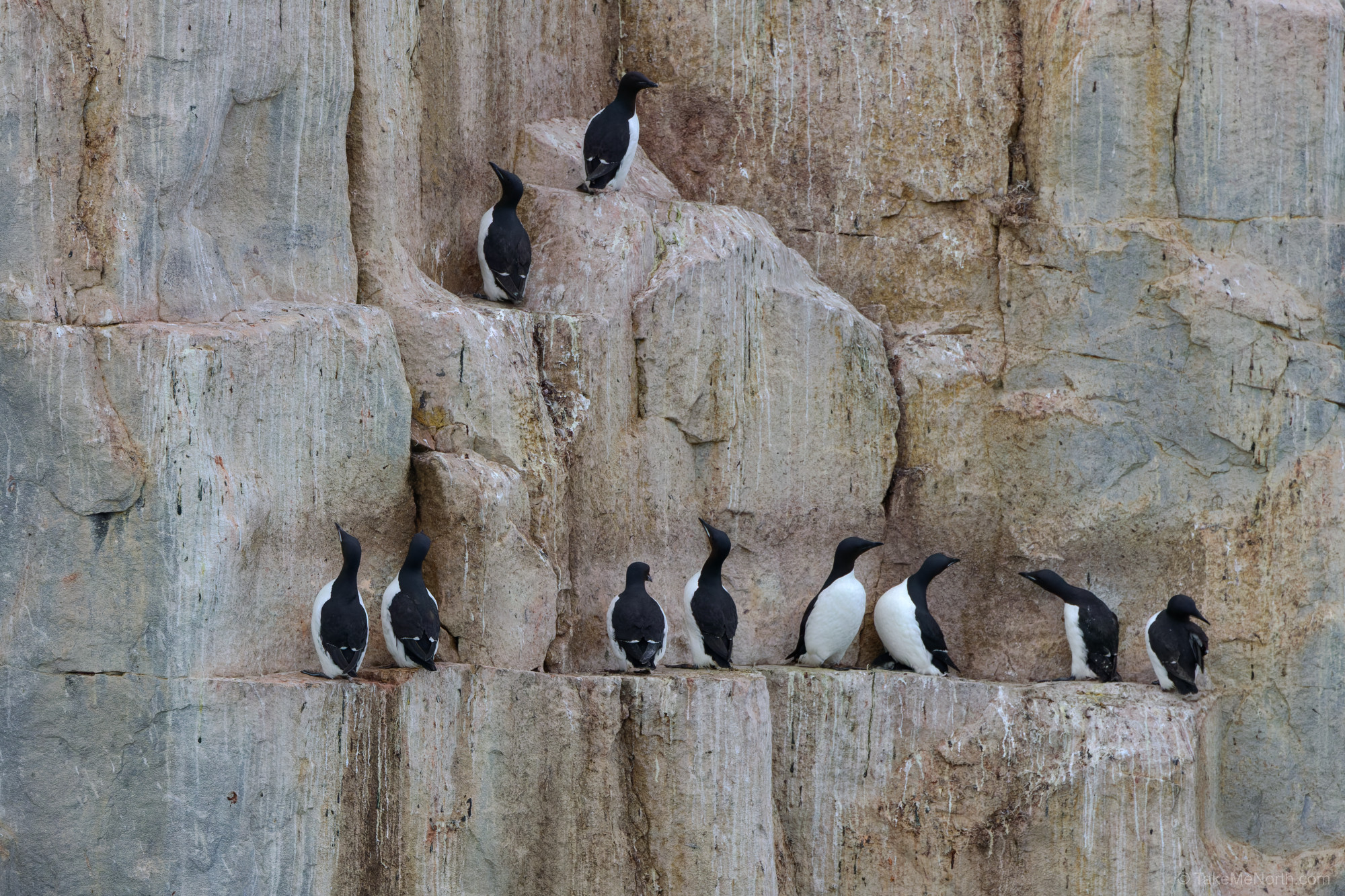
Brünnich’s guillemots at Alkefjellet
The concentration of birdlife here is staggering. Researchers have estimated that between 60,000 to 100,000 guillemots nest along the cliffs of Alkefjellet each year, creating one of the largest seabird colonies in the region. The birds’ synchronized flight patterns, the loud cacophony of calls, and the visual spectacle of so many creatures gathered in one place make Alkefjellet an unforgettable experience for any explorer.
In addition to the guillemots, kittiwakes, Arctic skuas, and other seabirds also make their homes on these cliffs, forming a complex ecosystem in the harsh Arctic environment. This rich birdlife supports not only the birds themselves but also the local populations of Arctic foxes and polar bears, which occasionally venture onto the cliffs to feed on eggs or fledgling chicks.
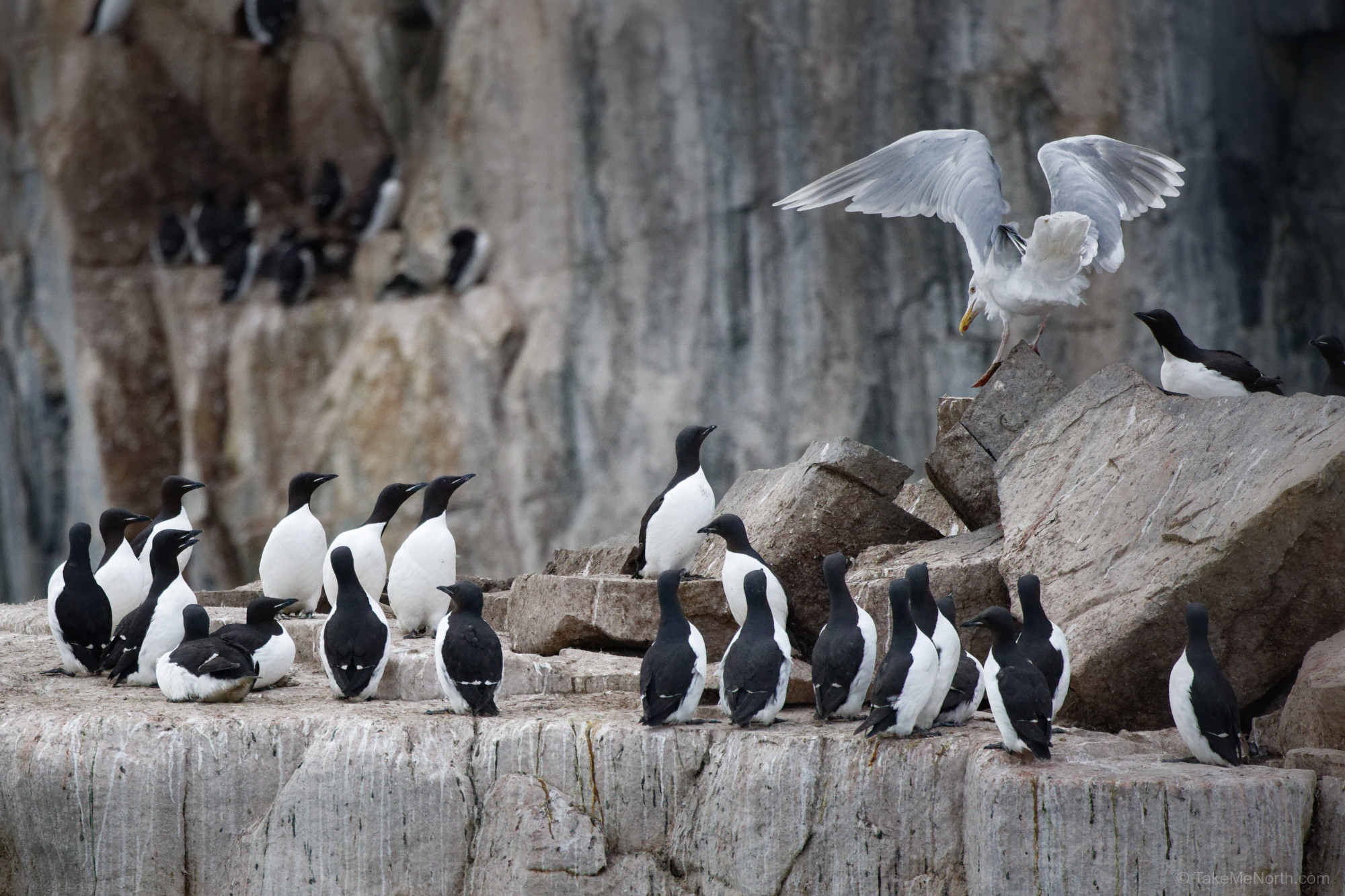
Brünnich’s guillemots defending their turf against an opportunistic sea gull
The Seasonal Dynamics of Alkefjellet
The Arctic seasons add another dimension to Alkefjellet’s allure. During the short summer months, the region is bathed in the perpetual daylight of the Midnight Sun. This continuous light supports the growth of plankton in the ocean, which in turn attracts fish and other marine creatures, creating an abundance of food for seabirds and larger predators alike. The result is a seasonal explosion of life along the cliffs, as birds raise their young and predators roam nearby.
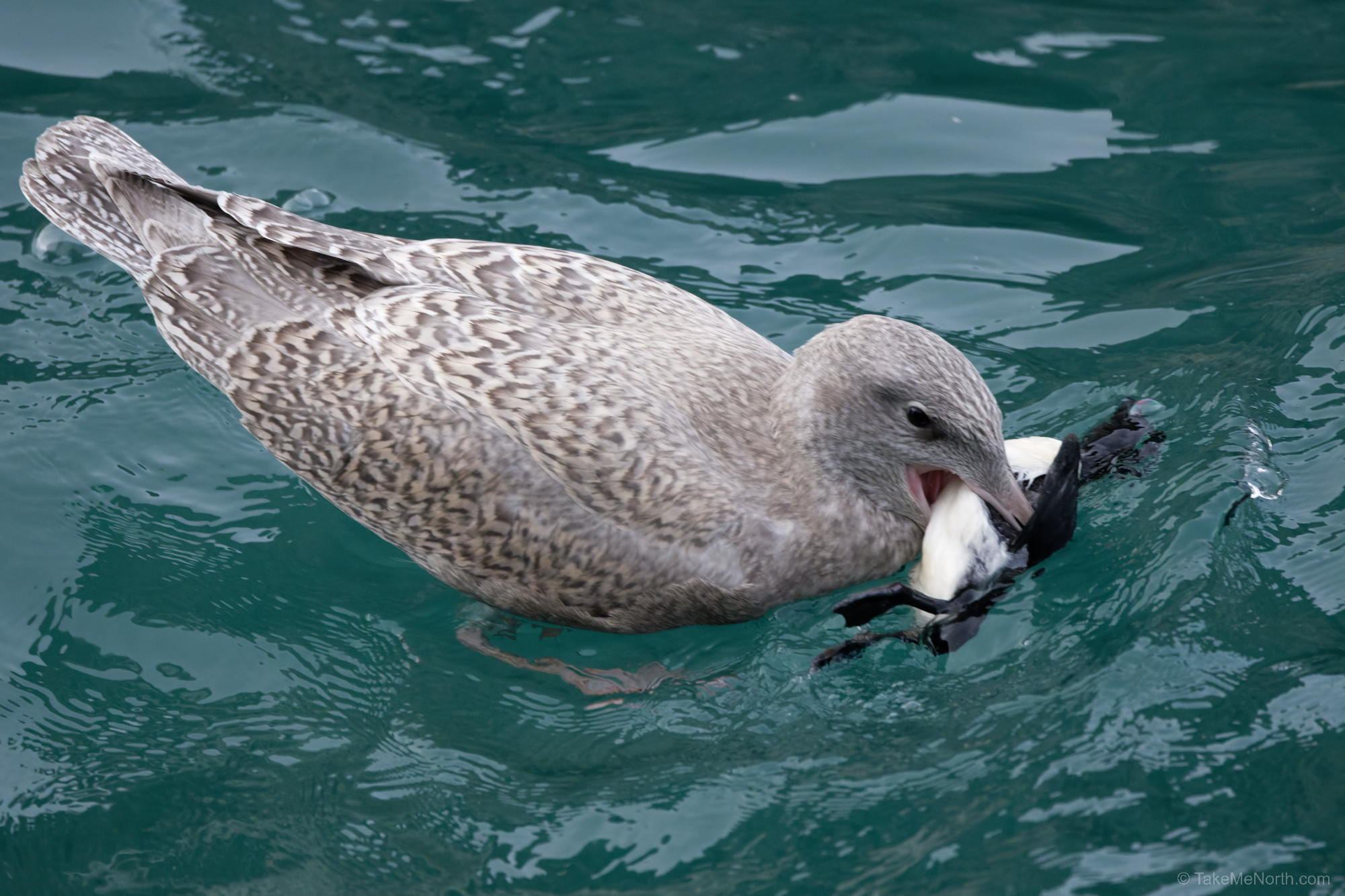
A juvenile arctic skua preying on a hatchling Brünnich’s guillemot
As the summer draws to a close, the birds depart, and Alkefjellet returns to a quieter state. The sun dips lower and eventually gives way to the long Arctic night, casting the cliffs into darkness and silence for several months. The starkness of winter is a reminder of the unforgiving nature of the Arctic, where only the hardiest creatures can survive. By spring, however, the cycle begins anew, and the cliffs once again become a sanctuary for seabirds.
Visiting Alkefjellet: An Unforgettable Arctic Adventure
Reaching Alkefjellet is no small feat. The cliffs are remote, accessible only via a long journey on an expedition ship, navigating the icebergs and icy waters of Hindeloopenstretet. Most visitors arrive during the summer months, when the waters are navigable, and the bird colonies are at their peak. The journey to Alkefjellet is part of the adventure, as passengers on expedition vessels often encounter other Arctic wildlife along the way, including whales, seals, and polar bears.
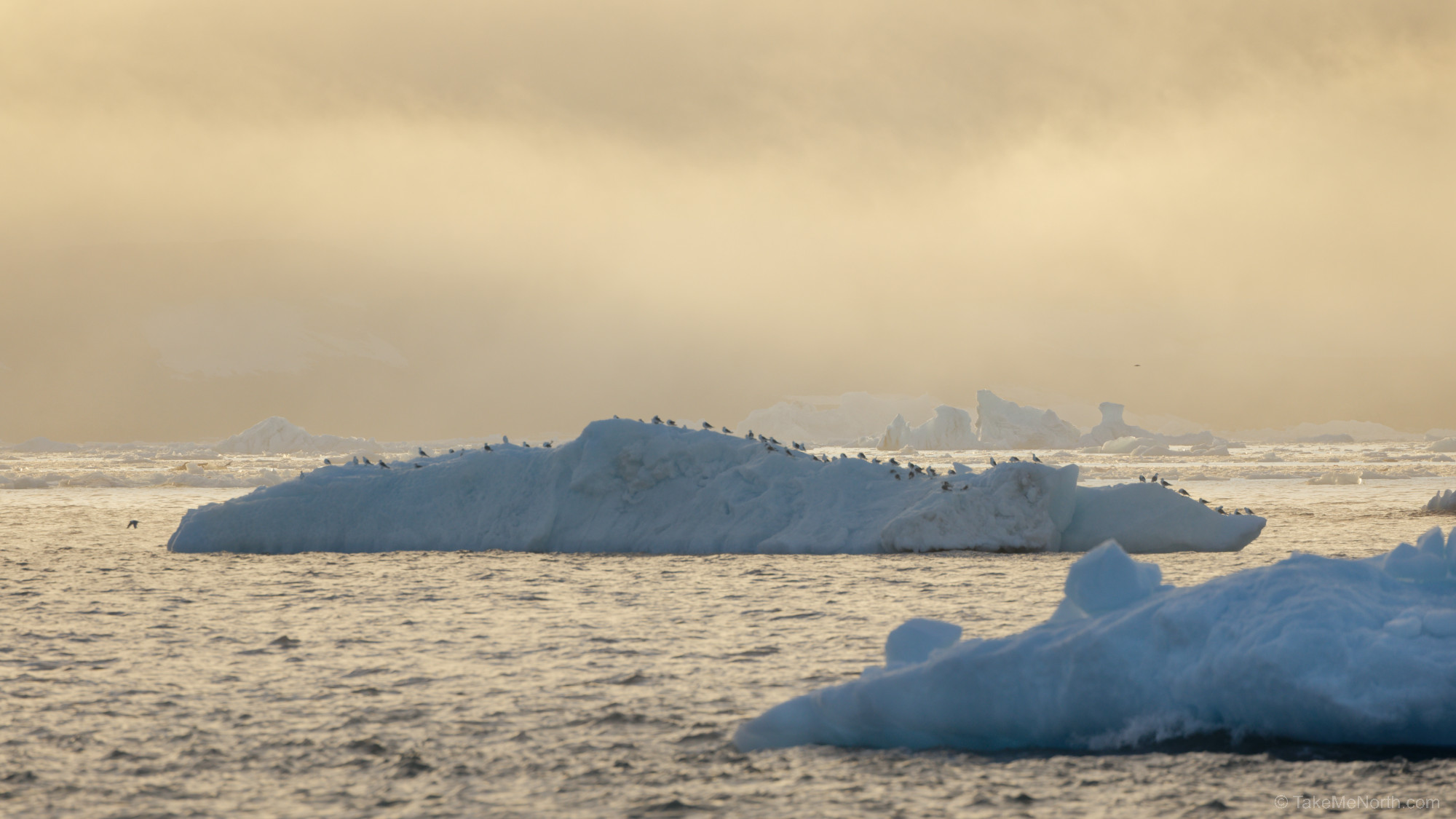
Navigating through the icebergs of Hinloopenstretet can be challenging, even in summer
When the cliffs come into view, visitors are struck by the grandeur of Alkefjellet and the sheer density of birdlife. From the safety of the ship or smaller zodiac boats, we can observe the seabird colonies up close, gaining a rare insight into the life of these resilient creatures. The sights and sounds are overwhelming; the steady hum of wings and cries of chicks mingle with the chilly Arctic air, creating an atmosphere both intense and serene.
As a photographer and nature enthusiast, I regard Alkefjellet as one of the most captivating sites in the Svalbard archipelago, with its awe-inspiring cliffs and dynamic wildlife. The experience offers not only an appreciation of nature’s beauty but also a sobering reminder of the fragility of Arctic ecosystems.

